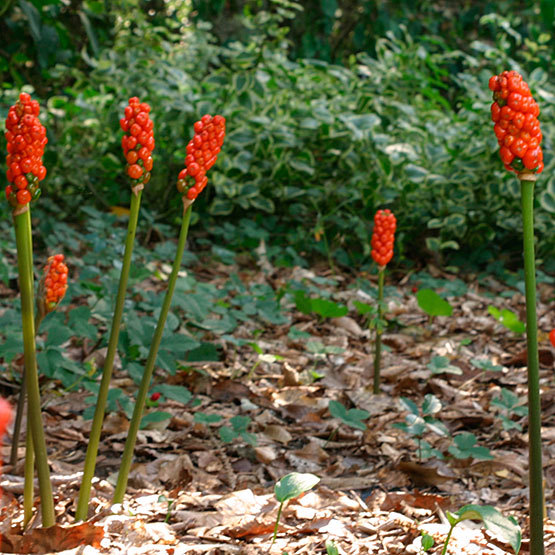
Arum are spring-flowering, tuberous perennials with attractively marked, arrow- or heart-shaped leaves. The flowers are small but are enclosed in large spathes. They may have a sweet or unpleasant fragrance. Spikes of red or orange berries appear after the flowers. The genus contains about 26 species from a range of partially shaded habitats in Europe, Africa, and Asia. Arum are useful in shrub borders, in the greenhouse, or in flower arrangements.
Noteworthy CharacteristicsAttractive leaves, large spathes of flowers, spikes of berries. All parts may cause severed discomfort if ingested. Contact with the sap may irritate skin.
CareIn the garden, grow in a sheletered area in well-drained, organically rich soil in full sun or part shade. Indoors, grow in full or filtered light and provide ample water during the growing season. Keep almost dry when dormant.
PropagationDivide after flowering, or sow seed in autumn in a cold frame after removing the pulp from the berries, which may be caustic.
ProblemsInfrequent.



















